05Jun
Minimizing the risk of chip-jammer interference for UAVs
 Affordable, high-end drones coupled with easy-to-use mission-planning tools, created the perfect environment for drones to flourish.
No longer the preserve of specialists, applications using drones have ventured into survey, inspection and volume analysis.
The impact of drones is little short of revolutionary.
But, in the air, the stakes are higher. When things go wrong, the consequences are invariably much more serious than for a ground-based application. One of the biggest threats to drone safety is GNSS interference.
At the very least, disruptions to satellite signals can degrade position quality. When this occurs it causes fall-backs from high-precision RTK and PPP modes to less-precise modes. In the most extreme cases, interference can result in complete loss of signal tracking and positioning.
Affordable, high-end drones coupled with easy-to-use mission-planning tools, created the perfect environment for drones to flourish.
No longer the preserve of specialists, applications using drones have ventured into survey, inspection and volume analysis.
The impact of drones is little short of revolutionary.
But, in the air, the stakes are higher. When things go wrong, the consequences are invariably much more serious than for a ground-based application. One of the biggest threats to drone safety is GNSS interference.
At the very least, disruptions to satellite signals can degrade position quality. When this occurs it causes fall-backs from high-precision RTK and PPP modes to less-precise modes. In the most extreme cases, interference can result in complete loss of signal tracking and positioning.
Self interference
Other components installed on a UAV is often a significant source of interference. The restricted space often means that the GNSS antenna is in close proximity to other electrical and electronic systems.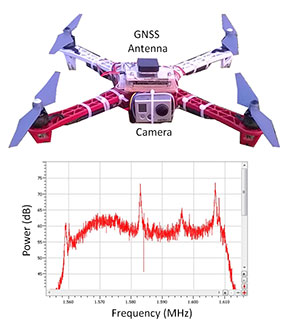 Figure 1 shows what happened to the GPS L1-band spectrum when a GoPro camera was installed on a quadcopter close to the GNSS antenna without sufficient shielding. The three peaks are exactly 24 MHz apart. This points to their being harmonics of a 24 MHz signal: the typical frequency for a MMC/SD logging interface.
An AsteRx4 receiver, which includes the AIM+ system, was selected for this setup. As well as mitigating the effects of interference, AIM+ includes a spectrum plot to view the RF input from the antenna in both time and frequency domains.
At the installation stage, the ability to view the RF spectrum is an invaluable tool for identifying the source of interference. Plus, it helps with determining the effectiveness of measures such as modifying the setup or adding shielding.
For the quadcopter installation in this example, the loss of RTK was readily diagnosed. The problem was solved by placing the camera in a shielded case. All this while the quadcopter was still in the workshop.
Figure 1 shows what happened to the GPS L1-band spectrum when a GoPro camera was installed on a quadcopter close to the GNSS antenna without sufficient shielding. The three peaks are exactly 24 MHz apart. This points to their being harmonics of a 24 MHz signal: the typical frequency for a MMC/SD logging interface.
An AsteRx4 receiver, which includes the AIM+ system, was selected for this setup. As well as mitigating the effects of interference, AIM+ includes a spectrum plot to view the RF input from the antenna in both time and frequency domains.
At the installation stage, the ability to view the RF spectrum is an invaluable tool for identifying the source of interference. Plus, it helps with determining the effectiveness of measures such as modifying the setup or adding shielding.
For the quadcopter installation in this example, the loss of RTK was readily diagnosed. The problem was solved by placing the camera in a shielded case. All this while the quadcopter was still in the workshop.
External sources of interference
GNSS receivers on-board UAVs can be particularly vulnerable to external sources of interference, be they intentional or not. In the sky, the signals from jammers can propagate over far longer distances than they would on land. In the case of UAV inspections of wind turbines for example, many countries encourage the construction of windmills next to roads. However, this situation increases the chance of interference from in-car chirp jammers. Though illegal, chirp devices are cheap and readily available on the internet. For example, an individual using a chirp jammer can drive around undetected by the GPS trackers on the vehicle. Car thieves can disable GPS anti-theft devices on stolen vehicles with chirp jammers.External interference: the effect of a chirp jammer on a UAV flight
Although transmitting with a power of around 10 mW, chirp jammers are powerful enough to knock out GNSS signals in a radius of several hundred meters on land. In the air, unhindered by trees, building or other obstacles, these jamming signals have a far greater reach. Thus, the UAV is much more vulnerable to interference. Figure 2 shows how a 10mW chirp jammer can knock out RTK positioning over more than 1 km in a high-end receiver.
Even a low-end consumer-grade L1 receiver, being less accurate and thus less sensitive, loses stand-alone positioning over several hundred meters.
With AIM+ activated, the AsteRx4 is able to maintain an RTK fix throughout the simulated flight. It also shows no degradation to its position variance.
Figure 2 shows how a 10mW chirp jammer can knock out RTK positioning over more than 1 km in a high-end receiver.
Even a low-end consumer-grade L1 receiver, being less accurate and thus less sensitive, loses stand-alone positioning over several hundred meters.
With AIM+ activated, the AsteRx4 is able to maintain an RTK fix throughout the simulated flight. It also shows no degradation to its position variance.

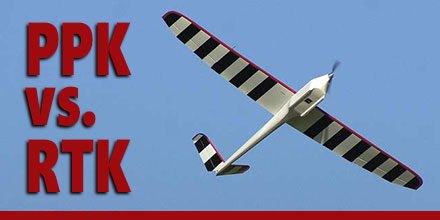 UAS vendors targeting markets from commercial survey to agriculture are fielding systems with real-time kinematic GNSS (RTK) capability.
In principle, RTK promises accuracies at the 1-3cm level. The main purpose is to minimize or eliminate the need for ground control points, thereby reducing cost.
Altavian uses GNSS receivers upgradeable to RTK operation, but favors another approach for this level of accuracy: post-processed kinematic (PPK). There are a couple of reasons why:
UAS vendors targeting markets from commercial survey to agriculture are fielding systems with real-time kinematic GNSS (RTK) capability.
In principle, RTK promises accuracies at the 1-3cm level. The main purpose is to minimize or eliminate the need for ground control points, thereby reducing cost.
Altavian uses GNSS receivers upgradeable to RTK operation, but favors another approach for this level of accuracy: post-processed kinematic (PPK). There are a couple of reasons why:
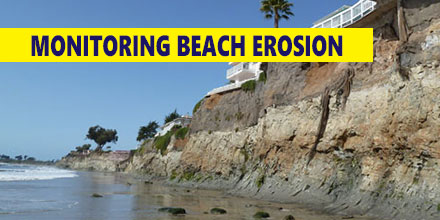 New and emerging technologies tend to enhance existing industries and services. In addition, emerging technologies also help create new industries and services.
Unmanned aerial vehicles are one of the biggest trends due in part to their potential use across a range of service and industry applications.
One such emerging application is coastline monitoring.
New and emerging technologies tend to enhance existing industries and services. In addition, emerging technologies also help create new industries and services.
Unmanned aerial vehicles are one of the biggest trends due in part to their potential use across a range of service and industry applications.
One such emerging application is coastline monitoring.
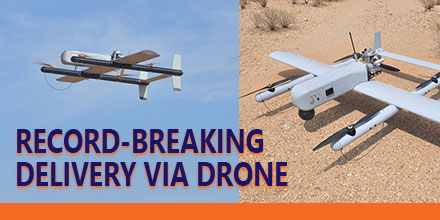 A record was recently set in long-distance delivery via drone. The record-breaking event took place
A record was recently set in long-distance delivery via drone. The record-breaking event took place  In December Aeromao Inc., completed a full photogrammetric survey mission of an island with an Aeromapper Talon UAV...in one flight. The survey took place in collaboration with Foresight Surveyors.
One of the most unique and exotic islands in the Maldives, the Talon surveyed a total area of approximately 251 acres or 1 Sq. Km. at a GSD of 2cm/pixel.
In December Aeromao Inc., completed a full photogrammetric survey mission of an island with an Aeromapper Talon UAV...in one flight. The survey took place in collaboration with Foresight Surveyors.
One of the most unique and exotic islands in the Maldives, the Talon surveyed a total area of approximately 251 acres or 1 Sq. Km. at a GSD of 2cm/pixel.
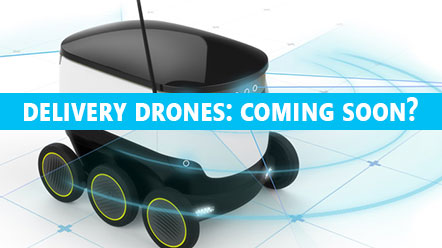 Companies from various sectors envision a future driven by artificial intelligence (AI) and automation. So far, much of the attention seemed focused on developing unmanned aerial vehicles.
But not every company looked only to the skies...some had more terrestrial ideas in mind.
Enter Starship Technologies, a start-up based in Estonia. The team at Starship created a line of autonomous ground based courier robots, or sidewalk delivery drones.
Companies from various sectors envision a future driven by artificial intelligence (AI) and automation. So far, much of the attention seemed focused on developing unmanned aerial vehicles.
But not every company looked only to the skies...some had more terrestrial ideas in mind.
Enter Starship Technologies, a start-up based in Estonia. The team at Starship created a line of autonomous ground based courier robots, or sidewalk delivery drones.
